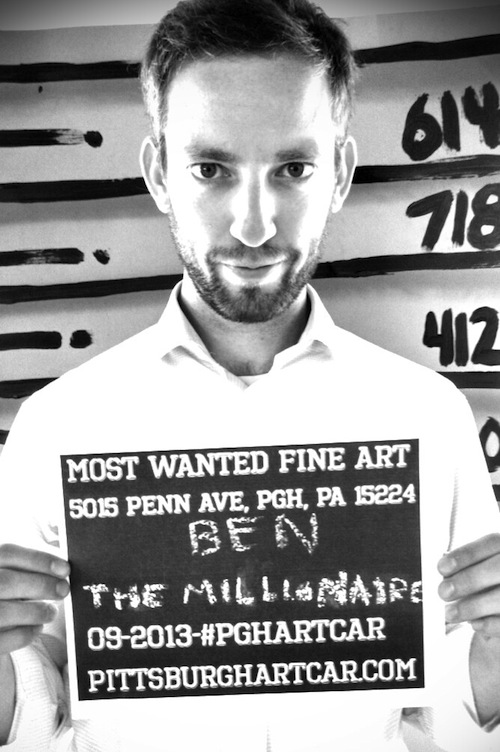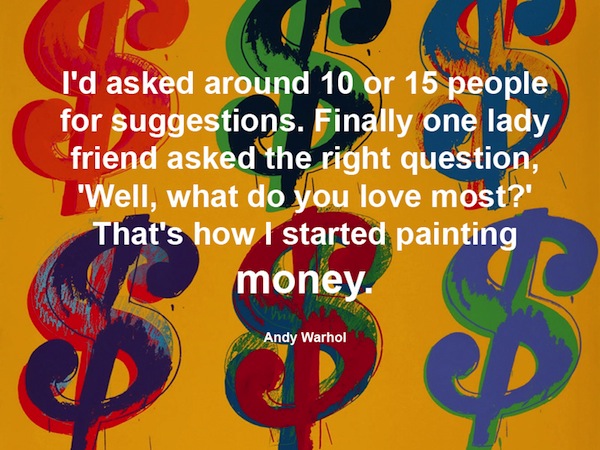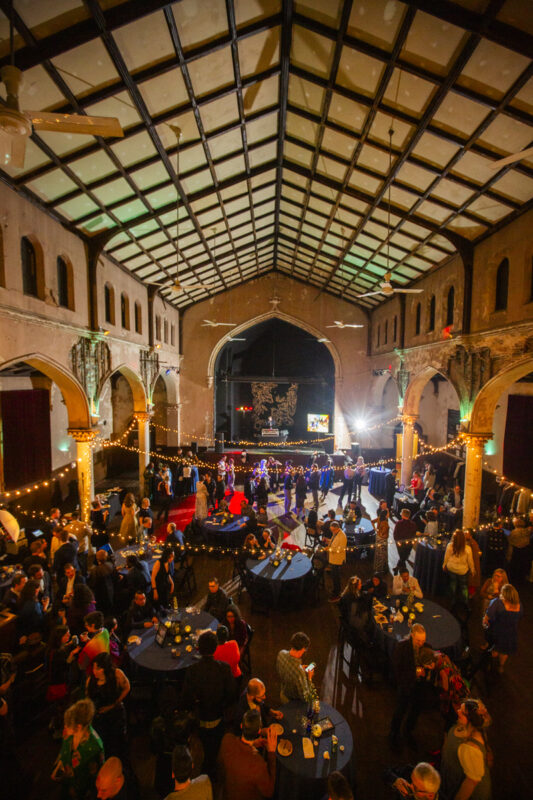In 2007, the following statement made me throw up in my mouth and roll my eyes at the same time. In an attempt to rally the support of the American people, George W. Bush said:
“As we work to chart a new course in Iraq and strengthen our military to meet the challenges of the 21st century, we must also work together to achieve important goals for the American people here at home. This work begins with keeping our economy growing. … And I encourage you all to go shopping more.”
At the time, my immediate reaction was disgust and disbelief. The president starts a war and tanks the economy and his solution is to go shopping? This may be how teenaged girls deal with problems on TV, but, for the leader of the free world, the suggestion seemed insensitive and out of touch with a nation facing significant obstacles.
Fast forward six years to 2013 and now I’m a believer. No, I’m not a Republican. And I’ve never been much of a shopper. I don’t have a lot of money, but I have been converted to believe in the power of retail therapy.
Over the past six years, I have worked as an artist with day jobs as adjunct college faculty and at struggling publications and I have come to realize that nothing is more powerful than the collective decisions we make as consumers. No vote I can cast is more valuable than the one I parlay with my credit card. Does this sound crazy? Welcome to capitalism, the place where money trumps any other value or cause. I am a little shocked to hear myself say it, but I don’t believe this has to be all bad.
As consumers, we form the bottom of the economic pyramid, but there are a lot of us and we buy stuff. What most consumers don’t realize is that this is power. No matter what and where we buy, our choices make a huge difference in the lives of other people. In many cases, our purchases are critical in keeping organizations, as well as political and economic structures, alive. This is serious might and our spending is the clearest declaration of values that exists. Consumers can choose to wield this power purposefully or to be clueless about the institutions they financially support.
For example, when we buy cheap stuff at big chain stores, we communicate our support for job creation in other countries. We also, for the most part, are supporting unsafe, climate-unfriendly, and abusive working conditions, just as long as our products are cheap. When we buy processed food loaded with corn syrup, we are actually voting in favor of government subsidies to corn agribusiness. We are forcing farmers to grow corn instead of other, greener stuff, and to produce so much corn that it is fed to every farmed animal including fish. At this point, we produce so much corn in this country, we have scientists figuring out new ways to use it, creating new opportunities for diabetes. Do we really need more corn? If you buy processed food including sodas and most juice, your vote says yes.
What about wearing clothing with logos and brand names? Although most consumers think a popular brand emblazoned on their person increases their own value, the opposite is true: wearing a designer label is free advertising for the company that produced your clothing. It’s a public endorsement of brand and you are paying them to advertise on their behalf. Whose logo do you wear on your chest? What organizations are worthy of your public endorsement? I personally think clothing with a label should cost less than plain stuff for this reason, unless it is a business worthy of my admiration and endorsement.
The same ideas are true for our local economy and for Baltimore’s creative economy, especially during the “shop till you drop” holiday season. This year, how much money did you put into Baltimore’s local ecosystem and how much did you send to Bangladeshi sweatshops? Is it more expensive to buy better stuff? Yes. Is it probably healthier to buy less stuff? Yes. So why don’t we do this more? It’s complicated.
One reason is that most people don’t understand that every purchase they make directly supports someone else. Most consumers don’t understand that when you buy directly from a local business or creative maker, all the money goes back to that individual and you’re making the world a better place. Yes I said that.
This rant was actually intended to be me bragging about the fact that NONE of my holiday gifts were bought in big box stores or at the mall. None. I feel proud of myself. Merely for shopping locally and voting in favor of my town with my wallet. What did I buy? Where did I buy it?
This year I bought a few items at local museum gift shops – The BMA, the Walters, and AVAM all have amazing stores. The rest I bought (except for The Muppet Show Season 1 for my son, damn you Amazon) from local flea markets and craft fairs, including MICA’s Art Market and The Baltimore Craft Mafia’s Holiday Heap. This weekend I wrapped up my holiday gift-buying at the Baltimore Flea, a weekly market that comes with a guy shucking oysters which, let’s be honest, kicks the ASS off of mall sushi. When there are great options like these, it is shocking to me that most consumers still go to crowded malls to wait in long lines for salespeople, who make minimum wage, to sell them stuff made in other countries. As a creative person, I feel strongly that I don’t have to support institutions that I find to be, personally, yucky.
Family, I am pretty sure you’re not reading, so I will get more specific. I bought a print from the Baltimore Print Studio, T’s and scarves from Red Prairie Press, and soaps, candles and lotions from Terra Verde. They smell divine. I bought gift cards to local restaurants like The Dizz and The Ambassador Dining Room and The Mount Vernon Stable because my brother loves the ribs there. And I purchased small batch bourbon from my local liquor store. In the past, I have given gift cards but I chose paper certificates instead this year. Americans spend billions on gift cards every Christmas and, for the most part they aren’t recycled and end up as tiny bits of plastic floating in the ocean that look like fish food and kill fish. Who needs that guilt? Down with plastic gift cards.
I am ranting and pontificating here and if you don’t like it, that is fine. This conversation really isn’t about me, or shouldn’t be. It’s actually all about you, the empowered consumer.
Dear Consumer, I want you to be well informed of your shopping options and the results of your decisions this season. Consumer, please know you are POWERFUL. You are MIGHTY. Your choices matter and they directly shape your community and world. You have the opportunity to live in a place with lots of independently owned, creative businesses or in big box wastelands that all look the same. The exciting part of this is that much of this is up to us, the little guy who shops.
For those of us who make stuff, whether it’s handcrafted soap or fine art or blog posts, consumers need to know they are the reason we can exist. When you buy direct from an artist, or (ahem) support a local publication with a tax-deductible donation, it’s different than buying from a national chain. When you buy direct and local, you’re not just a consumer – you’re an investor. When you buy or give to an institution, you assess value, establish worth. When you buy, you actively choose which products and entities succeed and which ones fail.
Do you want to live in a town with more commercial art galleries? Great. Buy more art. Do you love eating locally grown food prepared in loving and unique ways? Great. Eat at local restaurants and buy at Farmers Markets.
Are you sad that The Urbanite no longer exists and that all the newspapers, except CP, have cut back on arts writing and coverage? I hear ya. Do you want to keep reading Bmoreart on a regular basis? Great. Then support us with the dollars you will pay to the government anyway. That’s the beauty of a tax-deductible gift.
Don’t believe me? That’s okay. As Americans and Baltimoreans you are free to purchase whatever you want, wherever you want to. Maybe it takes some of the sexy out of the shopping experience, to understand that every swipe of the credit card builds the world you live in, makes the 1% richer, or keeps a local creative person in business.
For those who live here in Baltimore, it is obvious that this town needs retail therapy. It needs more investment. It needs Believers who also buy stuff, as George W. Bush suggested. It needs a strong community funded with actual dollars from every single person who chooses to live here. Once you understand that you, the consumer, have the power to shape your immediate place and the lives of those around you, why would you choose not to?
* Author Cara Ober is the Editor at Bmoreart






